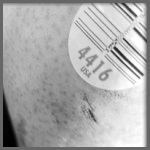False.

Some children start cracking their knuckles because they like the cool sound it makes, some because they say it feels good, and others do it just because they know it annoys their parents. So what causes the “crack” or “pop” anyway? In basic terms, it’s caused by air or gas bubbles being released in a joint. A more detailed explanation is offered by Castellanos & Axelrod (1990). They write “Cracking of the knuckles results in a rapid increase of intrasynovial tension. This increased tension results in synovial fluid cavitation, which causes rapid separation of the joint and collapse of the vapour phase of the formed cavity. The consequent release of vibratory energy provides the cracking noise.” No matter what causes the sound, parents have long been warning kids against knuckle cracking for fear it will lead to arthritis in old age. Only a few studies have examined whether habitual knuckle cracking leaves the “crackers” disfigured and suffering from painful arthritis in old age. The results of these studies suggest that there is no relationship or association between cracking knuckles and arthritis. It seems reasonable to think that cracking your knuckles would lead to damage of the cartilage that covers the ends of the bones in your fingers and hands (think of the awful sound cracking your knuckles makes), but it is not true. The above mentioned authors conducted a study in which they compared knuckle crackers vs. non-crackers and found the crackers didn’t have increased rates of arthritis in old age. They did find however, that those who did habitually crack their knuckles were more likely to have hand swelling and decreased grip strength and they suggest that habitual knuckle cracking should be avoided.
Reference:
Castellanos J & Axelrod D: Effect of habitual knuckle cracking on hand function. Annals of the Rheumatic Diseases (1990), Vol. 49, pps. 308-309.









